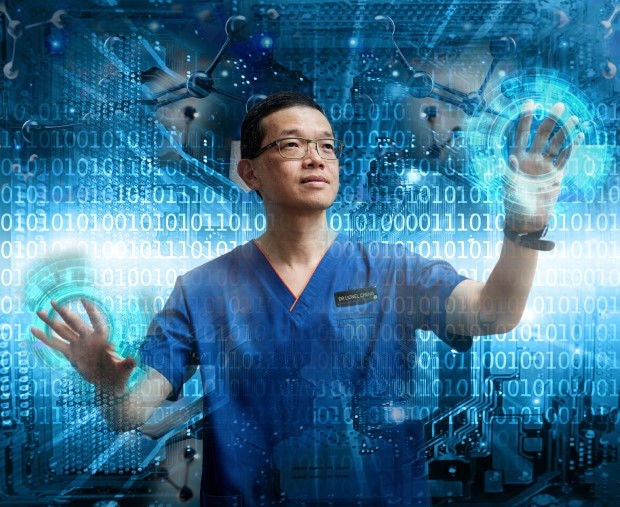
A radiologist’s experience in imaging informatics helps him lead SGH’s new department that taps on AI to provide better healthcare
As Singapore General Hospital’s (SGH) first Chief Data and Digital Officer (CDDO), Dr Lionel Cheng says of his new job, “We are building the plane while flying it!”
His division is so new that he is doing several things at one go: establishing the infrastructure for the various departments under it, looking at their priorities, hiring people to staff it and planning projects to undertake. “CDDO is a new construct within SingHealth; I have no predecessors to look to,” said Dr Cheng, who is also Senior Consultant, Department of Diagnostic Radiology (DDR), SGH. “A lot of things are being put in motion. All I have is the intent of the organisation and what it wants to achieve. It’s very exciting but terrifying at the same time because there are so many unknowns.”
As his title suggests, Dr Cheng’s primary responsibility is data. More than that, he needs to make sense of the huge amount of information available and how to make it work for improving patient care. Besides having to be secure and safe, initiatives to harness and interpret the data must also be usable and easily accessible. “Technology must meld into the background so that the doctor, nurse or therapist can spend more time on the patient and not get distracted figuring out the system. We must move the focus away from ‘high-tech’ to ‘hightouch’,” he said, stressing that technology must connect data and systems to allow processes to work seamlessly.

Dr Cheng (above) is well placed to develop and grow his role. DDR was an early adopter of technology and digitalisation in medical imaging and analysis. “People only see the image, but there is a whole bunch of information embedded in it. You have to dig deep into the images to see what’s associated with it,” said Dr Cheng, who is also Clinical Director (Artificial Intelligence), Future Health System Department, SGH.
An imaging informatics research fellowship in the US introduced Dr Cheng to a world where IT meets the healthcare frontline. “It was a tremendous opportunity to see two world-class institutions (tech giant IBM and respected healthcare institution Mayo Clinic) working together to find solutions to healthcare problems,” he said. Besides setting him off on a steep learning curve, the fellowship allowed him to learn not to fear risks or failure but to move on quickly to try something new, adapt or adjust if something did not work.
Wearing several hats means his biggest challenge is in balancing time. “The time I spend on digital or AI work is time taken away from clinical work, and I know that my team members are compensating for me. I have to ensure that the time for non-clinical work is as meaningfully engaged and useful as possible,” he said.
To protect his clinical time, he tries to segregate clinical and non-clinical work clearly on his roster so that he can still contribute to radiology work and patient care. The same goes for his family, devoting weekends and after-work hours strictly to his wife and two young sons. The family enjoys exploring new places and sharing treasured moments together.
Previously an avid marathoner, Dr Cheng has had to put this interest on hold until his children are older. “They are my source of energy and hope. Their curiosity and the way they look at the world refresh me. So that’s the inspiration that keeps me going to build something better for them and their generation,” he said.
A big Star Wars and Lego fan, Dr Cheng has built model vehicles from the films with Lego building blocks. He is waiting for his sons to grow up and help him build his yetto- unbox 5,195-piece Millennium Falcon, an iconic Star Wars craft. “That one is going to take some time to build,” he said wistfully.
Get the latest updates about Singapore Health in your mailbox! Click here to subscribe.













 Get it on Google Play
Get it on Google Play